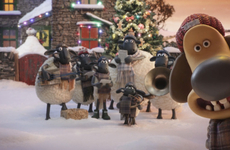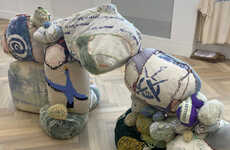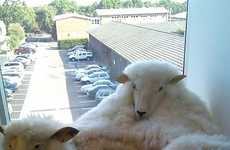
Climate Change to Blame
Climate change is being being blamed for the changing shape of Scottish Sheep - the results of a 20 year study of Soay sheep in the Outher Hebrides revealed.
Published in Science, it is thought that increasingly harsh winters have led to larger sheep. This in turn has effected population size.
Describing studying the flock as a natural labatory - the study also not surprsingly concluded that when winters became less harsh the sheep would get smaller.
Published in Science, it is thought that increasingly harsh winters have led to larger sheep. This in turn has effected population size.
Describing studying the flock as a natural labatory - the study also not surprsingly concluded that when winters became less harsh the sheep would get smaller.
Trend Themes
1. Climate-driven Animal Evolution - Climate change is leading to rapid changes in animal morphology and presents an opportunity for genetic research, cross-breeding, and selective breeding.
2. Adaptive Agriculture Alternatives - Agriculture and livestock industries have the potential to implement new practices, like climate-controlled environments, to adapt to changing animal morphology and ensure consistent outputs.
3. Consumer Impact of Climate Change - Changing animal morphology due to climate change could impact consumer behavior in terms of meat quality and quantity, presenting an opportunity to explore and market alternative meat products.
Industry Implications
1. Animal Genetics and Breeding - As animals rapidly evolve due to climate change, there is an opportunity for animal genetics and breeding industries to innovate by pinpointing desirable genetic traits and creating new breeds suited for changing climatic conditions.
2. Agriculture and Livestock - Changing animal morphology due to climate change presents an opportunity for agriculture and livestock industries to explore new practices, like indoor farming and feed alternatives, to adapt to changing climatic conditions.
3. Alternative Meat Production - Climate change-driven changes in animal morphology could lead to a rise in alternative meat production, from plant-based to lab-grown, as consumers seek out more sustainable and consistent protein sources.
1.6
Score
Popularity
Activity
Freshness























